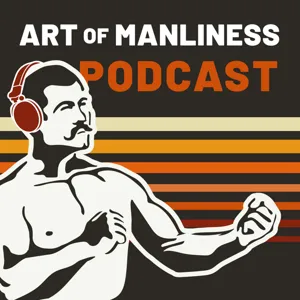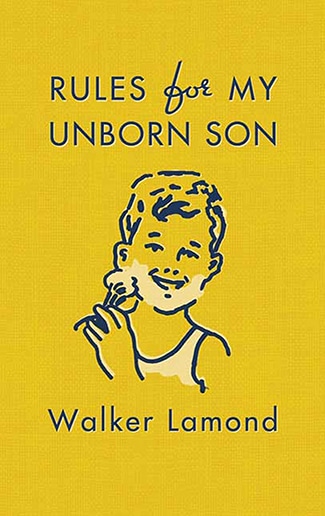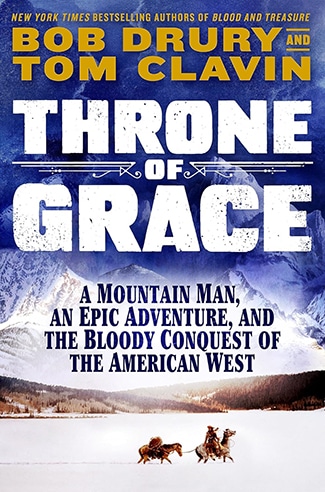Podcast Summary
Exploring the History and Culture of Bunker Building and Survival Prepping: From ancient civilizations to modern-day luxury condos, humans have always sought to prepare for potential crises through building bunkers and prepping for survival. The modern movement has evolved into a multi-billion dollar industry, driven by a desire for community and a diffuse sense of dread.
The phenomenon of building bunkers and prepping for survival is not a new concept, but it has gained significant momentum in the modern age due to a diffuse sense of dread and a desire for community rather than individual approaches. From ancient subterranean cities to Cold War-era backyard shelters, and now to luxury survival condos and backyard bunkers, the human instinct to prepare for potential crises has evolved throughout history. Urban exploration played a role in author Bradley Garrett's fascination with bunkers, leading him to explore the history, philosophy, and contemporary culture of this movement. The conversation touched upon various aspects, including the emergence of a multi-billion dollar private bunker building industry, the resistance against the surveillance state, and the cultural differences in prepping practices around the world. Ultimately, the question remains whether bunker building and survival prepping is a rational response to the state of the world or just a manifestation of human fear and desire for control.
Exploring Abandoned Places Can Lead to Legal Consequences: Urban exploration can result in legal issues, including being caught by authorities, deleting photos, and even lengthy investigations. Discovering Cold War bunkers during urban exploration sparked the speaker's interest in survivalism and post-apocalyptic scenarios.
Urban exploration, the act of exploring abandoned or off-limits places, often exists in a legal gray area. This was evident in the speaker's experiences, which included getting caught by security guards and even the police. The consequences ranged from being sent away to deleting photos and even facing a lengthy legal investigation and being stuck in a foreign country for two years. The speaker's urban exploration adventures also led him to an interest in bunkers, prepping, and survivalism. The connection came from discovering Cold War bunkers during urban exploration, which sparked his imagination about potential post-apocalyptic scenarios. Some of these bunkers were massive and had supplies and infrastructure for surviving a nuclear attack, leading him to ponder the idea of emergence into a devastated world.
From ancient civilizations to modern-day preppers, bunkers have been built to safeguard what's important: Bunkers, from ancient times to present day, have been constructed as a response to fear and uncertainty, reflecting our ability to prepare for potential crises
The construction of bunkers is a long-standing human response to fear and uncertainty about the future. From ancient civilizations like the Hittites, who built subterranean cities for protection, to modern-day preppers, people have been creating shelters to safeguard what's important to them. The 20th century saw a surge in bunker building due to the threat of nuclear war, with governments and individuals alike investing significant resources into these structures. One intriguing aspect of this history is the influence of US nuclear strategists, such as Herman Kahn, who advocated for the creation of blast shelters for every American, an ambitious plan that would have required a massive financial investment. Overall, bunkers represent a unique aspect of human behavior, reflecting our ability to speculate about potential crises and prepare for them.
Historical and Current-Day Bunker Building Trends: During the Cold War, governments built large-scale bunkers and encouraged individual preparation, leading to a 'doom boom' industry. Today, private sector caters to the demand for bunkers and survival supplies due to dread and uncertainty about various potential threats, worth almost $12 billion and serving over 11 million Americans.
The fear and uncertainty of potential global catastrophes, such as nuclear war, artificial intelligence, asteroid impacts, and political unrest, have driven both historical and current-day bunker building trends. During the Cold War, the Eisenhower administration focused on building large-scale government bunkers while encouraging individuals to prepare themselves, leading to a "doom boom" industry. Today, as people express dread and unease about various potential threats, the private sector is once again emerging to meet the demand for bunkers and survival supplies, creating a second doom boom worth almost $12 billion and serving over 11 million Americans. Unlike fear, which has a specific object, dread is a more amorphous emotion, driving people to prepare for an uncertain future.
The Architecture of Dread: Preparing for Unknown Threats: Humans have always felt unease about the unknown and built structures to protect against potential threats, leading to a constant state of dread in today's world due to the sheer number and complexity of existential threats we face.
Throughout history, humans have experienced a sense of dread or unease about the unknown, leading them to prepare and build structures to protect against potential threats. From the Mayans building walls to protect against diseases they couldn't see, to modern-day bunker builders preparing for a range of calamities, this "architecture of dread" reflects our collective sense of unease. With the constant exposure to news and information about potential existential threats, both natural and man-made, humans are more saturated with dread than ever before. This constant state of dread is affecting our psychology, behavior, and social systems in unique ways, making it a defining characteristic of our current era in human history. We face more existential threats than ever before, many of which we have created ourselves, leading to a heightened sense of unease and the need to prepare.
Building Communities in Bunkers During Uncertain Times: People respond differently to uncertainty and fear, with some opting for self-sufficiency in bunkers and others seeking community safety. The Vivos Group sells WWII bunkers in SD to those looking for a new lifestyle focused on preparedness and self-sufficiency.
During times of uncertainty and fear, some people choose to retreat and build self-sufficient bunkers as a means of survival, while others seek community and safety in numbers. The Vivos Group, led by Robert Vasino, is an example of a company that has capitalized on this trend by selling off World War II bunkers in South Dakota to individuals and families looking to build a new community. These bunkers, while small and not vehicle accessible, have become homes for a diverse group of people who have left their old lives behind to create a new community focused on self-sufficiency and preparedness. Some residents plan to use their bunkers as emergency shelters, while others have already moved in full-time. Despite the ongoing coronavirus pandemic, the community has remained safe and self-sufficient, highlighting the appeal of this alternative lifestyle for those seeking security and connection.
Luxury Bunkers: A New Market for Survivalists: Luxury bunkers offer amenities like pools, libraries, and movie theaters, and sold out within a year, generating a profit of $10 million. Builders focus on community engagement and specific time periods to maintain psychological well-being.
There are various types of bunkers catering to different needs and budgets. While some offer basic shelter options, others prioritize luxury and community. Larry Hall, a property developer in Kansas, transformed an Atlas F nuclear missile silo into a 15-story subterranean complex, selling condos for up to $3 million. This luxurious bunker, with amenities like a swimming pool, library, and movie theater, sold out within the first year, generating a profit of $10 million. Hall aimed to keep residents entertained and maintain social equilibrium, likening the bunker to a cruise ship. Interestingly, bunker builders focus on providing for a specific time period rather than a specific threat. Hall built his bunker for five years and emphasized community engagement to prevent hoarding and maintain psychological well-being. Contrasting South Dakota's bunker community, where residents were more isolated, Hall's focus on entertainment and social interaction highlights the importance of psychological and social considerations in bunker design.
Two Types of Disaster Preppers: Community and Personal: People preparing for disasters divide into two groups: those seeking community bunkers for social connections and those preferring personal, backyard bunkers for privacy and independence.
There are two distinct groups of people preparing for potential disasters: those building community bunkers and those opting for personal, backyard bunkers. While the former groups aim to create social connections and survive together, the latter prioritize privacy and independence. The backyard bunker builders view their shelters as a resistance against surveillance and a secret space for personal projects. These structures, often simple and disguised, offer a sense of security and a place to weather short-term crises. Companies like Atlas Shelters and Rising S cater to these individual needs, providing various designs for backyard bunkers. Despite the differences, both groups share a common goal: preparing for potential emergencies.
Prepper cultures around the world: People worldwide prepare for potential crises with unique methods and motivations, from escape plans to self-sufficient vehicles and off-grid bunkers
Prepper cultures exist beyond the United States, and the motivations and methods vary greatly. In Europe, people focus on having an escape plan and stockpiling food due to limited space. In contrast, the Canadian in Thailand built an off-grid, eco-friendly bunker with a unique design that included a solar panel array and a Buddhist temple nearby. In Australia, the primary concern is wildfires, leading to a culture of "bugging in" or "bugging out" with self-sufficient vehicles and supplies. Despite the differences, the common thread is the human instinct to prepare for potential crises. A notable exception to this is the unfortunate story of a Canadian man who built a bunker but was unable to reach it during the pandemic due to travel restrictions.
Individuals and communities preparing for disasters: People are taking steps to prepare for emergencies, from building fire bunkers to creating armored bug out vehicles, with the growth of industries catering to these needs. Traditions like the Mormons' food storage add to this trend of self-reliance.
Individuals and communities are taking matters into their own hands to prepare for potential disasters and emergencies, as they feel the government may not be able to provide adequate assistance. This preparation takes various forms, from building fire bunkers to survive wildfires, to creating armored bug out vehicles for disaster relief and escape. These initiatives have led to the growth of private industries catering to these needs. The approaches to prepping can vary greatly, with some communities, like the Mormons in Utah, having a long-standing tradition of food storage and preparedness. Overall, the trend shows a growing sense of self-reliance and a willingness to invest in safety and survival measures.
Preppers and the allure of post-apocalyptic narratives: Preppers focus on building bunkers and preparing for disasters, but may lack a clear plan for rebuilding and finding sustainable community in the aftermath.
The prepper community, particularly those who build bunkers, have a rational response to the increasingly fragile world we live in. Since the Cold War, the Mormon church has encouraged its members to prepare for disasters and pool resources for community survival. This ethos was adopted by the U.S. government through Secretary of Agriculture Ezra Taft Benson. However, while preppers focus on building bunkers and preparing for disasters, they often lack a clear plan for rebuilding and finding community in the aftermath. The allure of post-apocalyptic narratives, where resources are abundant and people are on their own, can distract from the reality of rebuilding and finding sustainable community. Despite the stigma surrounding preppers, their actions may be a rational response to the potential chaos and threats in our modern world.
Turning to prepping for control and peace: Many people are becoming preppers to regain control, learn new skills, and prepare for potential disasters, not just for building bunkers or stockpiling supplies.
Despite the overwhelming feeling of helplessness in the face of global crises like the climate crisis and the pandemic, many people are turning to prepping as a way to regain control and find peace. Preppers are not the kooky and weird individuals we might assume them to be, but rather everyday people who are frustrated, scared, and trying to provide for their families. Prepping for some, like the author Bradley Garrett, is not just about building bunkers or stockpiling supplies, but also about learning new skills and gaining confidence. It's about taking small steps towards self-sufficiency and being prepared for potential disasters. The author himself has become a prepper and has started learning new skills and building a homestead. The book "Bunker: Building for the End Times" by Bradley Garrett provides a deeper exploration of this phenomenon and offers valuable insights for those interested in prepping. You can find more information about Bradley Garrett and his work on his website, bradleygarrett.com.













